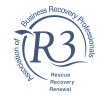If you have an unpaid company tax debt, you may wonder how long HMRC can pursue it and whether there’s any way to have it written off. Many people assume that HMRC can only chase outstanding VAT, PAYE, National Insurance contributions, Corporation Tax and Income Tax liabilities for a specific timeframe, but that’s not always the case.
In this article, we discuss what the timeframes for chasing unpaid company tax debt are, when they apply, how you can reduce or write off the debt, and whether dissolving your company is an option.
According to Section 37 of the Limitation Act 1980, there is no time limit for HMRC to pursue a tax debt once it begins an enquiry. However, the key phrase is ‘once it begins an enquiry’. If HMRC does not contact you within six years of the creation of the tax debt, it ordinarily loses the right to pursue you for the repayment.
However, there are some exceptions to this rule. In the case of fraud or deliberate misreporting, HMRC has up to 20 years to investigate and enforce repayment. That doesn’t mean HMRC can look into your past 20 years of tax returns without good reason. It must have genuine cause to suspect wrongdoing before initiating an investigation.
Once an investigation begins, HMRC can reclassify the severity of the case based on its findings. If it uncovers evidence that suggests you or someone else in the company was taking deliberate steps to avoid tax, they can then look back further.
As we’ve said, HMRC generally has a six-year window to contact you about a debt and begin an enquiry. Once HMRC contacts you about a tax liability and you acknowledge the debt, the six-year deadline restarts. From that point, even if it launches an investigation and then closes the case, it can reopen the case indefinitely if new information comes to light.
There are various ways of acknowledging an HMRC debt. For example, making a partial payment, contacting HMRC to negotiate a payment plan or even disputing it are all ways of acknowledging that a debt exists.
If you do not file a return or pay a tax bill when it’s due, there’s a structured process HMRC will typically take to recover the amount.
The first you’re likely to hear from HMRC will be a reminder to file your return or pay the outstanding amount. That will usually be in the form of a letter or email explaining when to make the payment to avoid further penalties.
If you ignore the initial contact, you’re then likely to receive a more formal payment demand informing you that late payment charges and interest are being applied.
You may also receive a notice of enforcement explaining that HMRC will take action if you do not make the payment within a specific timeframe and outlining the enforcement procedure it will use.
HMRC can act on the enforcement notice if you do not settle your arrears within seven days. That will usually involve a bailiff or HMRC enforcement officer attending your premises to seize and sell assets to cover the cost of the debt. HMRC usually uses third-party bailiffs from a debt collection agency.
If enforcement action does not successfully recover the unpaid debt, HMRC can issue a Statutory Demand or apply for a County Court Judgment against your business. Unpaid CCJs and Statutory Demands will negatively impact the company’s credit rating and make it difficult to access future borrowing.
Once it has issued a company with a Statutory Demand, HMRC can then initiate insolvency proceedings by serving the company with a Winding Up Petition to force it into liquidation. The court will schedule a hearing to determine whether to grant a Winding Up Order.
If the court makes a Winding Up Order, it’s very difficult to prevent the Compulsory Liquidation of your company. The court will appoint a liquidator to sell the company’s assets and repay its creditors, including HMRC, as far as possible before closing the business.
Some directors consider dissolving their companies to avoid paying their arrears, but voluntary dissolution is not an effective way to avoid unpaid HMRC tax debts. Firstly, dissolution is only a suitable closure method for companies that have settled all their debts.
As part of the process, you must inform your creditors within seven days of submitting your striking off application. Your creditors, including HMRC, can then object to the dissolution. At that point, Companies House will suspend the process and investigate the reasons for the objection. If it upholds the objection, the dissolution will not be allowed to proceed until you have paid HMRC what you owe.
Even if you do successfully dissolve a company with outstanding tax debts, HMRC has the power to restore the company to the Companies House register for up to six years after the date of dissolution. That extends to 20 years in cases involving fraud or negligence.
Once Companies House has restored your company, HMRC can take enforcement action to recover the debt. Your actions may also be investigated, and you could become personally liable for the company's debts or be disqualified as a director if you acted improperly or negligently.
HMRC always takes swift action to claim what is due to them. However, if you are unable to pay an outstanding tax bill, there are options available to either reduce or write off some or all of the liability.
If you cannot pay a tax bill in full, you may be able to negotiate a payment plan, known as an HMRC Time to Pay Arrangement, to give you more time to pay what you owe.
A Time to Pay Arrangement gives you a typical period of between three and 12 months to pay what you owe via monthly instalments. Although none of the debt is written off, it can make the debt more manageable and improve your cash flow.
If you have HMRC debts and other creditors that you are unable to pay in full, you may be able to enter into a Company Voluntary Arrangement. A CVA is a formal insolvency procedure, so you will need to work with an Insolvency Practitioner to put one in place.
A CVA typically gives you three to five years to repay your debts via monthly instalments, and crucially, any debt that remains unpaid at the end of the arrangement is written off. To enter into a CVA, your company must be financially viable and a majority of your creditors must agree to your proposals.
If your company has tax debts it cannot pay and it’s no longer financially viable, liquidating it voluntarily via a Creditors’ Voluntary Liquidation could be the best option.
You must appoint an Insolvency Practitioner to administer the liquidation on your behalf. They will sell company assets to repay HMRC and other creditors as much as possible. There is a strict hierarchy for creditor repayment, and HMRC is relatively low on the pecking order. That means it may have to accept a reduced payment or even nothing at all. In that case, any tax debts that the company cannot pay will be written off.
A limited company and its owners are separate legal entities, which means the owners are not usually personally liable for debts the company cannot pay, including its tax arrears. However, there are some circumstances where that may change, including:
A hefty tax bill that you cannot pay in full does not need to spell the end of your business, but hoping HMRC does not chase an unpaid company tax debt is not a realistic strategy.
At UK Liquidators, we will assess your circumstances and guide you on the best route to save your business, whether that’s a Time to Pay Arrangement, CVA or alternative funding. If that’s not possible, we can liquidate your business on your behalf while protecting your position as a company director. Please get in touch for a free, same-day consultation or arrange a meeting at one of our offices throughout the UK.
By completing the test, you will receive:
If you are considering liquidation for your company, taking expert advice at an early stage is crucial. At UK Liquidators, our team of licensed insolvency practitioners are committed to providing limited company directors with the help and advice they need to make an informed decision.




Looking for immediate support?
Complete the below to get in touch